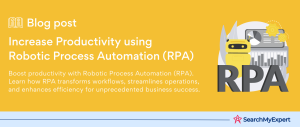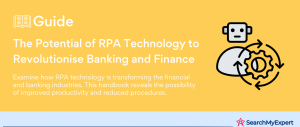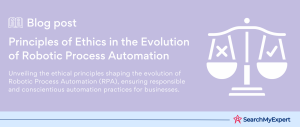Understanding Robotic Process Automation (RPA) and Its Transformative Impact on Businesses
Robotic Process Automation (RPA), at its core, is a revolutionary technology that enables software robots or ‘bots’ to replicate routine, rule-based tasks typically carried out by humans. This automation technology leverages artificial intelligence (AI) and machine learning to manage high-volume, repetitive tasks that previously required manual input, such as data entry, transaction processing, and email responses.
Key Benefits of RPA for Organizations
- Increased Efficiency and Productivity:
RPA bots operate tirelessly 24/7, significantly accelerating task completion and boosting productivity. They perform tasks faster and with unwavering accuracy, reducing the time and errors associated with human processing. - Cost Reduction:
By automating routine tasks, RPA significantly cuts down on labor costs. It also minimizes the chances of errors, further saving costs related to corrections and quality control. - Scalability and Flexibility:
RPA offers unparalleled scalability, allowing businesses to adjust the deployment of bots according to fluctuating workloads. This flexibility ensures that organizations can scale operations up or down without the need to hire or lay off staff. - Enhanced Compliance and Security:
RPA tools document every task they perform, ensuring a high level of traceability and compliance. Since bots follow strict protocols, they also reduce the risk of security breaches associated with human error. - Improved Customer Experience:
By automating mundane tasks, RPA frees up human employees to focus on more strategic, customer-centric roles, leading to improved customer service and satisfaction.
Scaling RPA: A Catalyst for Growth and Efficiency
Scaling RPA can be a game-changer for organizations, enabling them to extend the benefits of automation across various departments and processes. This scalability not only enhances overall efficiency but also drives significant growth. By implementing RPA in multiple areas, businesses can achieve a cohesive, enterprise-wide automation strategy, leading to streamlined operations and an improved bottom line.
Challenges in Effectively Scaling RPA
While the potential benefits are immense, scaling RPA does come with its set of challenges:
- Complex Process Integration:
Integrating RPA into complex and interdependent business processes requires careful planning and expertise. - Change Management:
Adapting to an automation-first culture necessitates managing changes in workforce dynamics and training employees to work alongside digital bots. - Selecting the Right Processes for Automation:
Not every process is suitable for automation. Identifying the right processes that yield the most benefit when automated is crucial. - Maintaining and Updating Bots: As business processes evolve, maintaining and updating RPA bots to adapt to these changes is essential for continuous efficiency.
Assessing Scalability Readiness for Robotic Process Automation
Scaling Robotic Process Automation (RPA) effectively is a critical step for organizations looking to enhance their operational efficiency and drive growth. However, successful scaling is contingent upon several key factors. Understanding and assessing these factors is crucial for organizations to prepare for and implement scalable RPA solutions.
Key Factors for Successful RPA Scaling
Process Maturity:
- Definition:
The extent to which an organization’s processes are well-defined, documented, and consistent. - Assessment: Evaluate whether the processes are standardized across the organization and if they are ripe for automation.
- Improvement:
Standardize and optimize processes before automating them to ensure RPA success.
IT Infrastructure Readiness:
- Definition:
The capability of the current IT infrastructure to support RPA deployment. - Assessment:
Check if the existing IT infrastructure is robust and flexible enough to integrate RPA technologies. - Improvement:
Upgrade hardware, software, and network capabilities to ensure they can support the demands of RPA tools.
Change Management Strategies:
- Definition: The approach to managing the transition to RPA within the organization.
- Assessment:
Determine the organization’s readiness to adapt to changes brought by RPA in terms of workforce dynamics and operational shifts. - Improvement:
Develop comprehensive change management plans including staff training, communication strategies, and support systems.
Data Accessibility and Quality:
- Definition:
The availability and reliability of data required for RPA bots to function effectively. - Assessment:
Assess the quality, accessibility, and compatibility of the data with RPA systems. - Improvement:
Ensure data is clean, well-organized, and easily accessible for RPA systems.
Governance and Compliance:
- Definition:
The framework for managing RPA deployment in compliance with legal and regulatory standards. - Assessment:
Evaluate existing governance structures for their ability to oversee and regulate RPA initiatives. - Improvement:
Establish strong governance models that include compliance checks, risk management, and performance monitoring.
Employee Skills and Mindset:
- Definition:
The level of skill and the cultural mindset of employees towards RPA. - Assessment: Gauge employee readiness to work alongside RPA and their ability to manage and interact with bots.
- Improvement: Invest in training programs to upskill employees and foster a culture that embraces digital transformation.
Recommendations for Scalable RPA Adoption
- Conduct a Comprehensive Readiness Assessment:
Before embarking on RPA scaling, conduct a thorough assessment of the above factors. This will highlight areas of strength and pinpoint areas needing improvement. - Develop a Phased Implementation Strategy: Implement RPA in phases, starting with less complex processes, to gradually build capability and understanding.
- Foster Strong IT and Business Collaboration:
Ensure a collaborative approach between IT and business units for seamless integration of RPA into existing systems and processes. - Invest in Employee Training and Support:
Equip employees with the necessary skills and knowledge to adapt to an RPA-enhanced work environment. - Establish a Robust Governance Framework: Develop a governance model that ensures compliance, monitors performance, and manages risks associated with RPA.
- Regularly Review and Update RPA Strategies: As the organization evolves, continuously review and update RPA strategies to align with changing business needs and technological advancements.
Building a Center of Excellence (CoE) for Robotic Process Automation
The implementation of Robotic Process Automation (RPA) at scale necessitates a structured and strategic approach. A Center of Excellence (CoE) plays a pivotal role in governing and accelerating RPA initiatives within an organization. The CoE serves as a centralized hub, guiding, standardizing, and overseeing all aspects of RPA deployment.
Role of a CoE in RPA Implementation
- Strategic Governance:
The CoE provides overarching governance for RPA projects, ensuring they align with the organization’s business goals and objectives. - Standardization of Practices: It develops and enforces best practices, methodologies, and standards for RPA, ensuring consistency and efficiency across all automation efforts.
- Performance Tracking and Optimization:
The CoE monitors the performance of RPA bots, continually identifying opportunities for optimization and improvement. - Knowledge Sharing and Training:
Acts as a knowledge repository, promoting learning and sharing of RPA-related information across the organization.
Functions of the CoE
Process Identification and Assessment:
- Identifies and evaluates business processes to determine their suitability for automation.
- Prioritizes processes based on factors like potential ROI, complexity, and impact on operations.
Bot Development and Deployment:
- Oversees the design, development, and deployment of RPA bots.
- Ensures that bots are created in accordance with defined standards and best practices.
Change Management and Employee Engagement:
- Manages the human aspect of RPA implementation, including changes to roles and responsibilities.
- Fosters an organizational culture that is receptive to RPA and digital transformation.
Compliance and Risk Management:
- Ensures that RPA implementations comply with relevant laws, regulations, and internal policies.
- Manages risks associated with the deployment and operation of RPA bots.
Continuous Improvement and Innovation:
- Regularly reviews and refines RPA strategies and implementations for enhanced efficiency and effectiveness.
- Explores and integrates new RPA features and advancements.
Composition and Skillset of the CoE Team
A successful CoE team comprises a diverse mix of skills and expertise, including:
RPA Developers and Architects:
- Possess technical expertise in RPA tools and technologies.
- Responsible for the technical design and development of RPA solutions.
Business Analysts:
- Understand business processes and requirements.
- Play a key role in identifying and assessing processes for automation.
Project Managers:
- Oversee the planning and execution of RPA projects.
- Ensure projects are delivered on time and within budget.
Change Managers:
- Specialize in managing organizational change.
- Responsible for employee training, communication, and managing the impact of RPA on the workforce.
Compliance and Risk Officers:
- Ensure RPA implementations adhere to legal and regulatory requirements.
- Manage risks associated with RPA.
Quality Assurance Specialists:
- Conduct testing and quality checks on RPA bots.
- Ensure bots operate as intended and meet performance criteria.
Prioritizing and Selecting Processes for RPA Automation
Successful Robotic Process Automation (RPA) implementation starts with the strategic selection of processes that are best suited for automation. This step is crucial because not all processes are equally viable or beneficial when automated. By establishing a set of criteria and employing a systematic approach, organizations can prioritize and select the most impactful processes for RPA.
Criteria for Prioritizing Processes for RPA
- Volume and Repetition:
High-volume, repetitive tasks are ideal candidates for RPA. Automation of these tasks can lead to significant time and cost savings. - Rule-Based Tasks:
Processes that are governed by clear, predefined rules and structured data are easier to automate and typically yield more reliable results. - Error-Prone Processes:
Tasks prone to human error, such as data entry, are prime candidates for RPA, as automation can greatly enhance accuracy. - Time Sensitivity:
Processes that have time constraints or deadlines can benefit from the speed and efficiency of RPA bots. - Compatibility with Existing Systems: Processes that can be automated with minimal changes to existing IT infrastructure are often preferred due to lower implementation costs and complexity.
- Potential Return on Investment (ROI):
Processes that promise a higher ROI in terms of cost savings, efficiency, and quality improvements should be prioritized.
Framework for Selecting High-Impact Processes
To objectively select processes for RPA, organizations can use a scoring system or framework. This framework should assess each process against the established criteria, assigning scores to quantify their suitability for automation. Here’s an example of how this can be structured:
- Assessment Matrix:
Create a matrix where processes are evaluated against each criterion on a scale (e.g., 1-5). - Weightage to Criteria:
Assign different weights to each criterion based on its importance to the organization’s objectives. For instance, ROI might carry more weight than compatibility with existing systems. - Scoring Process:
Score each process according to how well it meets each criterion. Multiply these scores by the weightages to get a weighted score for each criterion. - Total Scoring:
Add up the weighted scores for each process to get a total score. This total score represents the overall suitability of the process for RPA. - Prioritization:
Rank the processes based on their total scores. Those with the highest scores are prioritized for RPA implementation.
Implementing the Selection Process
- Cross-Functional Team Assessment: Involve a team with diverse expertise (IT, business, operations) to ensure a comprehensive evaluation of processes.
- Pilot Testing:
For processes with high scores, consider conducting pilot tests to validate the feasibility and potential benefits of automation. - Continuous Review:
Regularly revisit and update the criteria and scoring framework to align with evolving business needs and technological advancements.
Implementing and Deploying RPA Bots
The implementation and deployment of Robotic Process Automation (RPA) bots involve several critical stages, from development and testing to final deployment and user integration. Each stage requires meticulous planning and execution to ensure that the bots operate efficiently, securely, and in compliance with organizational standards and regulations.
Methodologies for Bot Development, Testing, and Deployment
Bot Development:
- Iterative Development:
Adopt an iterative approach to develop bots, allowing for incremental improvements and adaptations. - Standardized Design Principles:
Use standardized design templates and guidelines to maintain consistency and quality across different bots.
Testing:
- Unit Testing:
Test individual components of the bot for specific functionalities to ensure they perform as intended. - Integration Testing:
Assess how the bot interacts with other systems and processes, ensuring seamless integration. - User Acceptance Testing (UAT):
Conduct tests involving end-users to validate the bot’s performance in real-world scenarios.
Deployment:
- Phased Roll-Out:
Implement a phased deployment approach, starting with a pilot phase followed by a gradual roll-out, to monitor performance and gather feedback. - Monitoring and Support:
Establish continuous monitoring mechanisms and provide ongoing support to address any issues promptly.
User Training and Acceptance
- Comprehensive Training Programs: Develop training programs to educate users on how to interact with and manage RPA bots.
- Creating Awareness: Inform employees about the benefits and changes brought about by RPA, fostering a positive attitude towards automation.
- Feedback Mechanisms: Implement channels for users to provide feedback on bot performance and usability, facilitating continuous improvement.
Security and Compliance Considerations
- Data Security:
Ensure that RPA bots adhere to strict data security protocols, especially when handling sensitive or personal data. - Access Controls:
Implement robust access control mechanisms to prevent unauthorized use of RPA bots. - Audit Trails:
Maintain detailed logs and audit trails for all bot activities to facilitate accountability and traceability. - Regulatory Compliance: Regularly review and update RPA implementations to ensure they comply with relevant laws and industry regulations.
- Disaster Recovery Plans:
Develop comprehensive disaster recovery plans to ensure minimal disruption in case of failures or breaches.
Ensuring Seamless Bot Integration
- Change Management: Incorporate effective change management strategies to ease the transition and integration of RPA into existing workflows.
- User-Centric Design:
Design bots with the end-user in mind, focusing on usability and minimizing disruption to existing processes.
Monitoring and Optimizing RPA Bot Performance
Monitoring and optimizing the performance of Robotic Process Automation (RPA) bots is an ongoing process that is essential for maintaining efficiency, effectiveness, and alignment with business objectives. This phase involves using various tools and techniques to track bot performance, identify areas for improvement, and ensure that the bots continue to operate at their optimal level.
Tools and Techniques for Monitoring Bot Performance
Dashboard and Analytics Tools:
- Utilize RPA software dashboards that provide real-time analytics on bot performance, including metrics like transaction volumes, success rates, and error rates.
- Implement advanced analytics to derive insights from bot operations, helping to identify patterns and areas for optimization.
Performance Metrics Tracking:
- Track key performance indicators (KPIs) such as processing time, accuracy rates, and throughput to gauge bot efficiency.
- Use these metrics to benchmark performance and set targets for improvement.
Error Logging and Analysis:
- Implement error logging mechanisms to capture and analyze bot errors and exceptions.
- Use error logs to identify common issues and trends that require attention.
Role of Continuous Monitoring and Analytics in Optimization
- Proactive Problem-Solving:
Continuous monitoring enables early detection of issues, allowing for prompt remedial actions before they escalate. - Data-Driven Decisions:
Analytics provide valuable data-driven insights for making informed decisions about bot enhancements and process modifications. - Adaptability:
Ongoing monitoring ensures that bots remain aligned with evolving business processes and external changes.
Strategies for Bot Maintenance and Version Control
Regular Maintenance Schedules:
- Establish regular maintenance schedules to review and update bots, ensuring they adapt to process changes or external updates.
- Include routine checks for software updates, security patches, and compliance requirements.
Version Control Systems:
- Implement version control systems to manage changes to bot scripts, facilitating smooth updates and rollbacks if necessary.
- Ensure that all changes are documented and reviewed to maintain consistency and quality.
Feedback Loop Integration:
- Create a feedback loop where users can report issues or suggest improvements, incorporating this input into ongoing optimization efforts.
Collaboration Between IT and Business Units:
- Foster close collaboration between IT teams and business units to ensure that bots are continuously aligned with business needs and IT standards.
Scalability Considerations:
- Continuously assess whether bots are scalable and capable of handling increased loads or expanded scope, adjusting capacity as needed.
Measuring and Communicating ROI of RPA Initiatives
Understanding and effectively communicating the Return on Investment (ROI) is crucial for justifying the adoption and scaling of Robotic Process Automation (RPA) initiatives. By defining key metrics and quantifying benefits, organizations can demonstrate the tangible value of RPA and secure ongoing support from stakeholders.
Key Metrics for Measuring RPA ROI
- Cost Savings:
Measure the reduction in operational costs due to RPA implementation, including savings from reduced manual labor and error correction. - Productivity Gains:
Quantify the increase in output or processes completed due to automation. This includes measuring the time saved on tasks previously performed manually. - Accuracy and Quality Improvements:
Evaluate the reduction in errors and improvements in process quality, which can lead to higher customer satisfaction and fewer quality control issues. - Employee Utilization and Satisfaction:
Assess changes in employee roles and satisfaction, focusing on the shift from mundane tasks to more strategic activities. - Compliance and Risk Reduction:
Measure improvements in compliance due to standardized automated processes and reduced risk of human error. - Scalability and Flexibility:
Evaluate the ability to scale operations efficiently and respond to changing business needs due to RPA.
Quantifying Benefits Achieved Through Automation
- Calculate Cost Savings:
Compare pre- and post-automation costs, including personnel, infrastructure, and operational expenses. - Time Efficiency Analysis:
Measure the time taken to complete processes before and after automation. - Quality Metrics:
Track the number of errors or defects before and after implementing RPA. - Employee Productivity Metrics:
Analyze changes in employee productivity and time allocation. - Customer Satisfaction Surveys:
Use customer feedback to gauge improvements in service quality.
Communicating Positive Outcomes to Stakeholders
- Create Detailed Reports and Case Studies:
Develop comprehensive reports that clearly outline the benefits and successes of RPA initiatives, supported by data and specific examples. - Use Visual Aids: Employ graphs, charts, and infographics to illustrate the ROI and make the data more accessible and understandable to non-technical stakeholders.
- Hold Regular Review Meetings:
Schedule periodic meetings with stakeholders to present updates, discuss outcomes, and plan for future RPA initiatives. - Share Success Stories Internally: Communicate successes to the broader organization to build internal support and enthusiasm for RPA.
- Highlight Strategic Value:
Emphasize how RPA contributes to broader business objectives, such as digital transformation, competitive advantage, and long-term sustainability.
Conclusion
Robotic Process Automation (RPA) represents a significant leap forward in how businesses can streamline operations, enhance productivity, and achieve cost savings. The journey of implementing and scaling RPA requires a strategic approach, starting from assessing scalability readiness and building a competent Center of Excellence, to prioritizing and selecting processes for automation. The implementation phase demands careful planning in bot development, testing, and deployment, with a strong focus on security, compliance, and user training. Continuous monitoring and optimization are crucial for maintaining the efficacy of RPA bots, ensuring they deliver sustained benefits.
Lastly, measuring and communicating the ROI of RPA initiatives is vital for garnering ongoing support and investment from stakeholders. By navigating these steps diligently, organizations can harness the full potential of RPA, transforming their operational landscape and securing a competitive edge in the evolving business world.
Transform your business strategy with Robotic Process Automation Service Companies.
Further Reading
Table of Contents
Toggle






